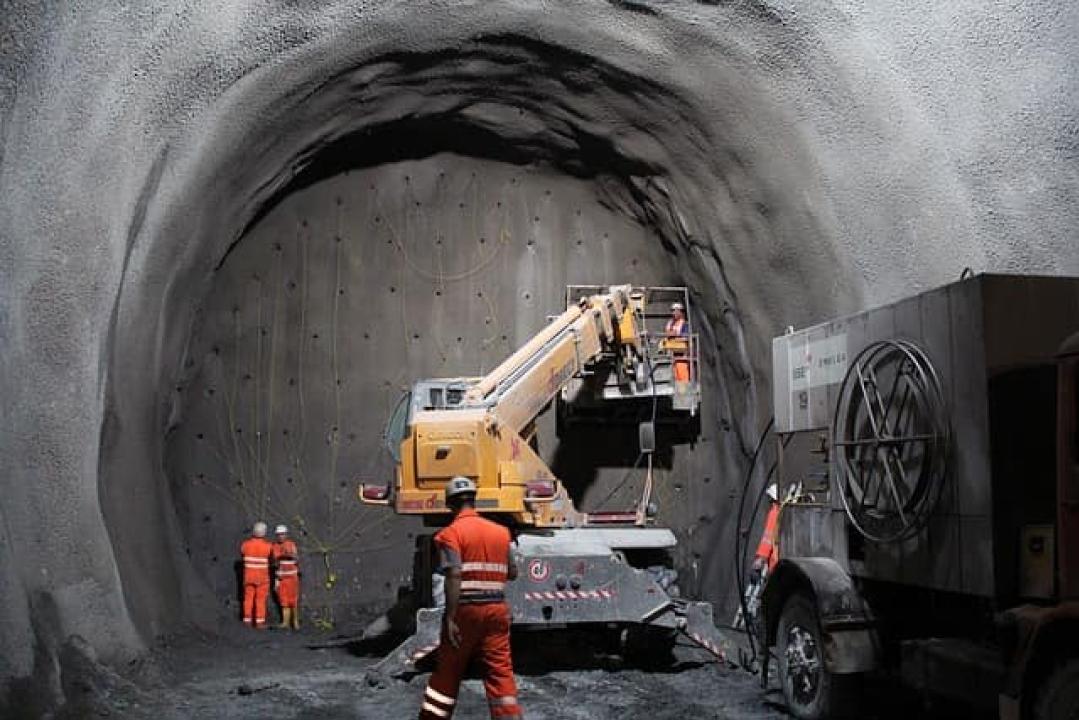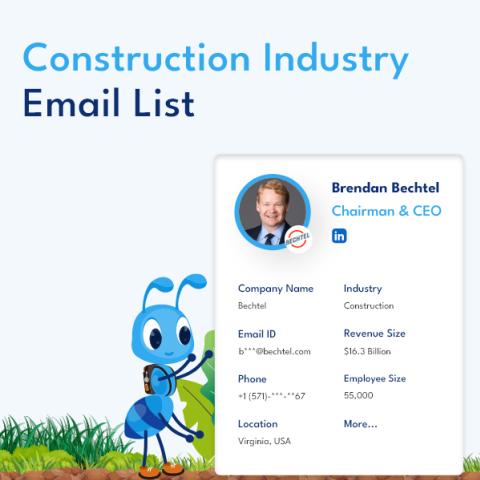Introduction:
Tunnel construction is a marvel of modern engineering, enabling the creation of infrastructure that extends beneath the earth’s surface. Whether for transportation, utility networks, or hydraulic projects, tunnels provide solutions to challenges that surface-level construction cannot. Tunnel construction involves a complex interplay of methods, specialized machinery, and careful planning to overcome geological barriers and provide safe, efficient passageways.
This article explores the various methods used in tunnel construction, the equipment involved, the benefits they bring, and the challenges faced in this critical aspect of civil engineering.
The Purpose and Evolution of Tunnels:
Tunnels serve multiple purposes, from connecting cities and regions to housing vital utility lines. Historically, tunnels were used for simple functions such as water transport and defense, like the ancient qanats of Persia or Roman aqueducts. These early tunnels were often manually excavated and utilized rudimentary methods to carve through rock or soil.
The Industrial Revolution marked a significant advancement in tunneling, with the introduction of explosives like dynamite and the development of shield tunneling methods. These innovations allowed engineers to construct longer and more complex tunnels beneath cities and bodies of water, such as the Thames Tunnel in London and the Mont Cenis Tunnel between Italy and France.
The 20th and 21st centuries brought further technological advancements, such as the tunnel boring machine (TBM), which revolutionized the field. TBMs are sophisticated machines capable of cutting through rock, soil, and mixed ground conditions while simultaneously supporting the tunnel walls.
Projects like the Gotthard Base Tunnel in Switzerland, the world’s longest railway tunnel, demonstrate the precision and power of these machines. The evolution of tunnel construction reflects humanity’s drive to push boundaries, overcome challenges, and create infrastructure that is resilient and adaptable to diverse conditions.
Also Read : Smart Construction Technology
Tunnel Construction Methods:
1. Cut-and-Cover Method
The cut-and-cover method is one of the oldest and most straightforward methods used for constructing tunnels, particularly for shallow depths. This technique involves excavating a trench, constructing the tunnel in this space, and then covering it with soil or another protective layer. The cut-and-cover method is often used in urban areas where space is limited and the impact of construction on the surface must be minimized.
Advantages:
- Cost-effective: This method is relatively inexpensive compared to other tunneling techniques.
- Minimal technical complexity: It does not require advanced machinery, making it accessible for smaller projects.
Challenges:
- Surface disruption: The construction process can cause significant disruption to surface-level activities, requiring careful planning and coordination.
- Land usage: It requires a large footprint, making it less suitable for dense urban environments.
Applications:
- Urban metro systems: Used extensively for building metro lines beneath busy city streets.
- Road underpasses: Ideal for creating tunnels beneath roads with heavy traffic.
Also Read : A Comprehensive Guide to Boundary Wall Construction
2. Bored Tunnel Construction
Bored tunnel construction utilizes tunnel boring machines (TBMs), which are large mechanical devices designed to excavate tunnels with minimal impact on the surrounding environment. TBMs can operate in a variety of soil and rock conditions, from soft soils to hard rock.
Advantages:
- Precision and efficiency: TBMs can accurately cut through rock and soil, ensuring smooth tunnel walls and reducing the need for additional lining.
- Minimized surface disruption: The construction process is largely underground, limiting impact on surface-level activities.
Challenges:
- High initial costs: The purchase, operation, and maintenance of TBMs can be expensive.
- Complex geology: TBMs may struggle in heterogeneous ground conditions, requiring detailed geotechnical analysis before deployment.
Applications:
- Large transportation projects: Used in the construction of high-speed railways, such as the Channel Tunnel.
- Utility tunnels: Ideal for projects involving the installation of pipelines and cables.
3. Drill-and-Blast Method
The drill-and-blast method is commonly used in hard rock tunneling. It involves drilling holes into the rock, filling them with explosives, and detonating them to break apart the rock face. This method is effective in areas where TBMs may be unable to operate due to geological constraints.
Advantages:
- Cost-effective: The initial investment is lower compared to TBMs.
- Adaptability: It can be used in a wide range of geological conditions.
Challenges:
- Vibration and noise: The process generates significant vibrations and noise, which can impact nearby structures and communities.
- Debris management: The removal of debris can be labor-intensive and slow.
Applications:
- Mining operations: Widely used in the mining industry for tunnel excavation.
- Mountain tunnels: Suitable for building tunnels through hard rock formations.
4. Immersed Tube Tunneling
Immersed tube tunneling involves prefabricated tunnel sections being constructed off-site, floated to the site, and submerged underwater. This method is particularly useful for crossing large bodies of water where other methods are impractical.
Advantages:
- Factory-controlled construction: Ensures high-quality standards during the manufacturing process.
- Minimal environmental disruption: Reduces impact on marine ecosystems and waterways.
Challenges:
- Complex alignment: Aligning the sections accurately underwater can be challenging
- Seal integrity: Maintaining watertight joints during construction is crucial.
Applications:
- Crossing rivers and straits: Examples include the Øresund Tunnel between Denmark and Sweden and the Seikan Tunnel in Japan.
5. Tunnel Formwork Construction
Tunnel formwork construction involves using prefabricated forms to cast concrete tunnel sections. This method is efficient for projects requiring a durable, smooth finish.
Advantages:
- Speed and uniformity: The use of prefabricated forms allows for rapid construction and a consistent finish.
- Flexibility: Customizable for different tunnel shapes and sizes.
Challenges:
- Limited design flexibility: Prefabricated forms may not accommodate unique design requirements.
- Cost: The initial setup of forms can be expensive.
Applications:
- Urban metro systems: Suitable for the construction of tunnels that require smooth internal surfaces.
Key Equipment in Tunnel Construction:
Tunnel construction relies on specialized machinery to excavate, line, and support tunnels. The following equipment is essential for modern tunneling projects:
a. Tunnel Boring Machines (TBMs)
TBMs are perhaps the most important technological advancement in tunnel construction. These machines are equipped with cutting wheels, conveyors, and various support systems that allow them to cut through soil and rock, install tunnel linings, and maintain stability throughout the excavation process.
Types of TBMs:
- Earth Pressure Balance (EPB) TBMs: Used in soft ground conditions to control the soil pressure.
- Slurry TBMs: Ideal for mixed ground conditions, using a slurry mixture to transport excavated material.
- Hard Rock TBMs: Equipped with specialized cutting heads to break through dense rock formations.
Advantages:
- Minimizes ground settlement: Reduces subsurface disruption.
- Efficiency: Cuts excavation time significantly compared to traditional methods.
Applications:
- Large-scale infrastructure projects: Examples include the Central Subway in San Francisco and the North East Line in Singapore.
b. Tunnel Drilling Machines
These machines are used for precise drilling in drill-and-blast methods. They drill holes into the rock face, which are then filled with explosives.
Advantages:
- Versatility: Can handle a range of rock types and drilling depths.
- Adaptability: Suitable for use in both urban and remote areas.
Applications:
- Hard rock tunneling: Often used in mining and mountain tunneling projects.
c. Tunnel Digging Machines
Tunnel digging machines are used to excavate soil and debris from the tunnel face. They are vital in soft ground tunneling, especially when dealing with loose or unconsolidated materials.
Advantages:
- Efficiency: Facilitates rapid excavation and debris removal.
- Cost-effectiveness: Reduces the labor required for manual excavation.
Applications:
- Urban infrastructure projects: Suitable for shallow tunnels beneath city streets.
d. Tunnel Ventilation Systems:
Tunnel ventilation systems are crucial for maintaining air quality during construction and operation. These systems manage dust, gases, and heat, ensuring a safe working environment for construction crews and passengers alike.
Applications:
- Long road and rail tunnels: Essential for providing a constant supply of fresh air and removing pollutants.
6. Tunnel Formwork Systems
These systems include prefabricated molds used to create tunnel walls, floors, and ceilings. They are used to ensure uniformity and durability in tunnel construction.
Applications:
- Metro and railway tunnels: Provide a smooth, durable finish.
Types of Tunnel Construction:
Tunnels can be broadly categorized based on their purpose and function:
I. Transport Tunnels
Transport tunnels facilitate the movement of people and goods. They are typically built for highways, railways, and metro systems.
Applications:
- Highways: Examples include the Gotthard Base Tunnel in Switzerland and the Seikan Tunnel in Japan.
- Metro systems: Examples include the London Underground and the New York City subway system.
Advantages:
- Reduces surface congestion: By providing direct underground routes.
- Minimizes environmental impact: Reduces the need for new roadways and surface-level infrastructure.
II. Utility Tunnels
Utility tunnels are designed to house pipelines and cables. They provide a way to lay utility lines out of sight, reducing the risk of damage from external factors.
Applications:
- Power and water supply lines: Examples include the stormwater tunnels in Toronto and utility corridors in Washington, D.C.
Advantages:
- Improved safety: Protects critical infrastructure from damage.
- Reduced maintenance costs: Easier access for repairs and upgrades.
III. Hydraulic Tunnels
Hydraulic tunnels are used for transporting water, usually for irrigation or hydroelectric power projects.
Applications:
- Irrigation projects: Examples include the Wadi Dayqah Dam Tunnel in Oman.
- Hydroelectric projects: Used in the construction of dam spillways.
Advantages:
- Efficient water management: Helps to regulate water flow and availability.
- Energy generation: Supplies power to regions via hydroelectric plants.
Advantages of Tunnel Construction:
Tunnel construction offers several benefits that make it an essential part of modern infrastructure development:
- Efficient Land Use: Tunnels free up surface land for agriculture, housing, and recreation. This is particularly important in densely populated areas where surface space is limited.
- Reduced Surface Congestion: By providing direct routes, tunnels reduce traffic on roads and railways, shortening travel times and fuel consumption.
- Environmental Benefits: Tunnels reduce the visual impact of infrastructure and minimize noise pollution. They are less intrusive to natural landscapes compared to surface-level construction.
- Year-Round Operation: Unlike surface infrastructure, tunnels are unaffected by weather conditions, allowing for year-round operation and maintenance.
Innovations in Tunnel Engineering:
Tunnel construction is not only about excavation and lining but also about incorporating advanced technology to improve efficiency and sustainability:
- Digital Twins: Virtual replicas of tunnels are used to monitor and predict maintenance needs. This technology allows for better management of the tunnel’s lifecycle, from construction to demolition.
- AI and Robotics: Automation in tunneling, including the use of AI for TBM operation and robotic inspections, has improved precision and reduced human error. Automated TBMs can adapt to changing ground conditions in real-time, enhancing safety and efficiency.
- Eco-Friendly Materials: The use of recycled concrete, green concrete, and steel in tunnel construction reduces the environmental footprint. Innovations in materials science have led to stronger, lighter, and more sustainable tunnel linings.
Challenges in Tunnel Construction:
Despite advancements, tunnel construction remains a complex and risky endeavor:
- Geological Complexity: The unpredictability of ground conditions can lead to delays and increased costs. Accurate geological surveys are essential to mitigate risks.
- Environmental Impact: Construction near bodies of water or in sensitive environments requires careful planning to minimize disruption.
- Safety Risks: Working underground exposes workers to risks such as cave-ins, toxic gases, and limited access to emergency exits. Safety measures, including the use of ventilation systems and regular monitoring, are crucial.
- Cost Overruns: The high costs of machinery, TBMs, and safety protocols can lead to budget overruns if not managed properly.
Conclusion:
Tunnel construction is a testament to human ingenuity and engineering excellence. The ability to carve through mountains, oceans, and cityscapes provides solutions to some of the most pressing challenges in infrastructure development. As technology continues to advance, the tunneling industry will benefit from innovations that make tunnels safer, more efficient, and sustainable.
By understanding the diverse methods, equipment, and advantages of tunnel construction, engineers and planners can design and execute projects that not only meet the needs of today but also anticipate the challenges of the future. As we look to connect regions, protect the environment, and improve transportation and utility systems, the legacy of tunnel construction will be one of resilience, efficiency, and progress.














